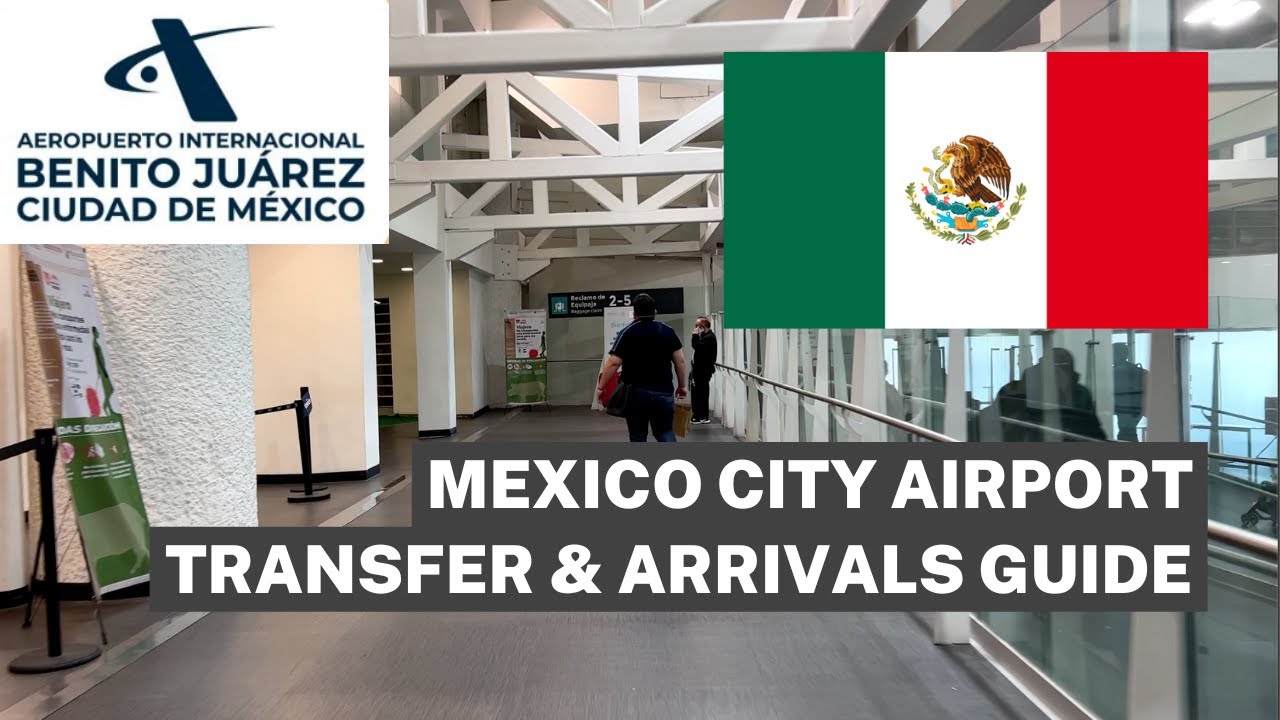The Route: From Mexico City International Airport to Desierto de los Leones
Traveling from Mexico City International Airport (Aeropuerto Internacional Benito Juárez) to Desierto de los Leones offers a scenic and straightforward journey. The most common route begins by taking the Periférico Oriente (Outer Ring Road), which provides easy access to the main highways leading out of the city. From the airport, you can follow signs directing you towards the Periférico, heading westward to connect with the main highway.
Once on the Periférico, you will take the exit towards La Villa, Cuajimalpa, and then follow the signs to Desierto de los Leones. The drive typically takes approximately 30 to 45 minutes, depending on traffic conditions. The route passes through Mexico City’s western neighborhoods and lush mountainous terrain, offering picturesque views as you ascend towards the natural reserve.
For those opting for public transportation, you can take a taxi or rideshare directly from the airport to the entrance of Desierto de los Leones, ensuring a hassle-free experience. Alternatively, you can take a combination of bus lines from various points in the city, but a direct route by car or taxi is often the most convenient for visitors seeking flexibility and comfort.
The Main Roads and Highways Taken During the Journey
During the journey, travelers primarily rely on well-maintained and strategically important roads to ensure a smooth and efficient trip. The main highways serve as the backbone of the route, connecting key cities and regions seamlessly. These roads are often equipped with clear signage, rest stops, and service areas, making the journey more comfortable and convenient for drivers and passengers alike.
Major Highways and Routes
- Interstate 95 (I-95): A vital north-south corridor that spans along the eastern coast, providing direct access to major urban centers and facilitating rapid travel between states.
- Highway 1: Known for its scenic views, this highway runs along the coastline, offering picturesque landscapes and access to popular tourist destinations.
- State Route 100: Connecting smaller towns and rural areas, this route offers a more relaxed driving experience while still maintaining efficient connectivity.
The journey also involves navigating through various junctions and interchanges that link these primary roads, allowing for smooth transitions and route adjustments as needed. Travelers should be aware of toll plazas and traffic conditions on these main roads to optimize their travel time and avoid delays. Proper planning along these highways ensures a safer and more enjoyable travel experience.
Traffic Insights and Travel Tips
Navigating traffic effectively requires staying informed about current road conditions and peak travel times. Monitoring real-time traffic updates through navigation apps or local transportation websites can help you avoid congestion and reduce travel time. Understanding typical traffic patterns, such as rush hours in the morning and late afternoon, allows travelers to plan their journeys more efficiently and minimize delays.
To ensure a smoother trip, consider planning your routes during off-peak hours whenever possible. Utilizing alternative routes or side streets can often help you bypass traffic jams, especially in urban areas. Additionally, being aware of upcoming roadworks, events, or accidents can help you adjust your plans accordingly, saving valuable time and reducing frustration.
Here are some essential travel tips to optimize your journey:
- Check live traffic updates before departure to choose the fastest route.
- Avoid peak hours by traveling early in the morning or later in the evening.
- Keep an emergency kit in your vehicle in case of unexpected delays or breakdowns.
- Stay informed about weather conditions that could impact traffic flow or road safety.
Landmarks Along the Way
When traveling through this region, several iconic landmarks serve as essential stops that highlight the areas rich history and cultural significance. These landmarks not only offer stunning visual appeal but also provide insight into the heritage and stories that have shaped the local community over centuries.
Among the most notable landmarks are historic sites such as ancient ruins, colonial-era buildings, and renowned monuments. These sites often feature impressive architecture and intricate details that attract history enthusiasts and tourists alike. Visiting these landmarks allows travelers to immerse themselves in the local narrative and appreciate the craftsmanship of bygone eras.
Additionally, natural landmarks such as scenic parks, waterfalls, and mountain vistas enhance the journey, offering breathtaking views and opportunities for outdoor activities. These natural wonders often serve as perfect photo spots and provide a refreshing contrast to man-made structures, enriching the overall travel experience.
For travelers interested in cultural landmarks, local museums, religious sites, and traditional markets are also key stops along the route. These sites offer authentic experiences and a deeper understanding of the customs, art, and daily life of the region’s inhabitants. Incorporating these landmarks into your itinerary ensures a comprehensive exploration of the area’s diverse heritage.
The Transition from Urban to Nature: The Final Leg
As travelers leave the bustling cityscape behind, they embark on the final leg of their journey into the heart of nature. This transition often begins with a scenic drive through picturesque countryside, where the urban noise gradually diminishes and the landscape opens up to lush greenery and open skies. The change in scenery signals a shift from concrete jungles to tranquil natural settings, offering a refreshing contrast that heightens anticipation for the adventures ahead.
During this phase, travelers may notice subtle signs of nature’s presence—winding country roads, quaint rural towns, and the sounds of birds and rustling leaves replacing city sounds. This segment serves as a sensory gateway, preparing visitors mentally and physically for outdoor exploration. It’s an opportunity to breathe in fresh air, appreciate the changing environment, and shed the stresses of urban life.
This final transition is often marked by the arrival at a designated natural destination, such as a national park, mountain retreat, or forest reserve. Here, the scenery becomes more immersive with towering trees, diverse wildlife, and pristine landscapes. It’s the culmination of the journey from urban comfort to raw, untouched nature, setting the stage for memorable outdoor activities like hiking, camping, or simply soaking in the serenity of the natural world.
My Arrival Experience at Desierto de los Leones
Arriving at Desierto de los Leones was a truly enchanting experience. As I approached the entrance, the lush greenery and tranquil atmosphere immediately set the tone for what was to come. The scenic drive through winding roads lined with tall trees created a sense of anticipation and excitement. The air was crisp and fresh, inviting me to leave behind the hustle and bustle of the city and immerse myself in nature’s serenity.
Upon entering the park, I was greeted by well-maintained signage and friendly staff who provided helpful directions and information. The parking area was spacious and conveniently located near the main attractions, making my arrival smooth and hassle-free. The initial view of the dense forest and the distant mountains was breathtaking, offering a glimpse of the peaceful sanctuary that awaited me. The atmosphere was quiet and calm, perfect for unwinding and reconnecting with nature.
The entrance area also features essential amenities such as restrooms, picnic spots, and small kiosks selling snacks and beverages. These facilities contributed to a comfortable start to my visit, allowing me to settle in and prepare for exploring the trails and historical sites. The overall impression of my arrival was one of tranquility and readiness to explore the natural beauty and cultural heritage of Desierto de los Leones.
The WOW Moment: An Unexpected Encounter
The WOW moment often arrives unexpectedly, transforming an ordinary experience into something truly memorable. It’s that fleeting instant when everything aligns perfectly, leaving you breathless and in awe. Whether its stumbling upon a hidden gem during a routine walk or crossing paths with someone who changes your perspective, these encounters have the power to evoke genuine surprise and delight.
What Makes an Unexpected Encounter Truly Special?
- Unpredictability: The element of surprise catches you off guard, making the moment even more impactful.
- Authenticity: Genuine interactions or sights that feel spontaneous and unforced amplify the sense of wonder.
- Emotional Impact: The surprise often triggers strong emotions—joy, amazement, or gratitude—that linger long after.
These moments often serve as turning points, inspiring new perspectives or sparking a sense of adventure. They remind us that sometimes, the most extraordinary experiences happen when we least expect them, urging us to stay open to the surprises that life has in store.
Reflections on the Journey and Final Tips
Embarking on this journey has been a transformative experience, offering valuable insights and lessons that extend beyond the initial goals. Reflecting on the process allows you to appreciate the growth, identify challenges overcome, and recognize areas for continued improvement. Taking the time to evaluate your progress fosters a deeper understanding of what strategies worked best and how your approach evolved over time.
As you consider your journey, it’s important to celebrate milestones and acknowledge the efforts that contributed to your success. This reflection not only boosts motivation but also helps in setting more informed and achievable future goals. Remember that setbacks are part of the learning process, and embracing them with a positive mindset can lead to greater resilience and innovation.
For a smooth continuation and future success, keep these final tips in mind:
- Stay consistent: Regularly review and refine your strategies to maintain momentum.
- Prioritize quality: Focus on creating valuable, relevant content that resonates with your audience.
- Keep learning: Stay updated with the latest trends and best practices in your field.
- Engage with your community: Foster relationships and gather feedback to improve and grow.
By applying these insights and tips, you can continue building on your achievements and navigate future challenges with confidence.


